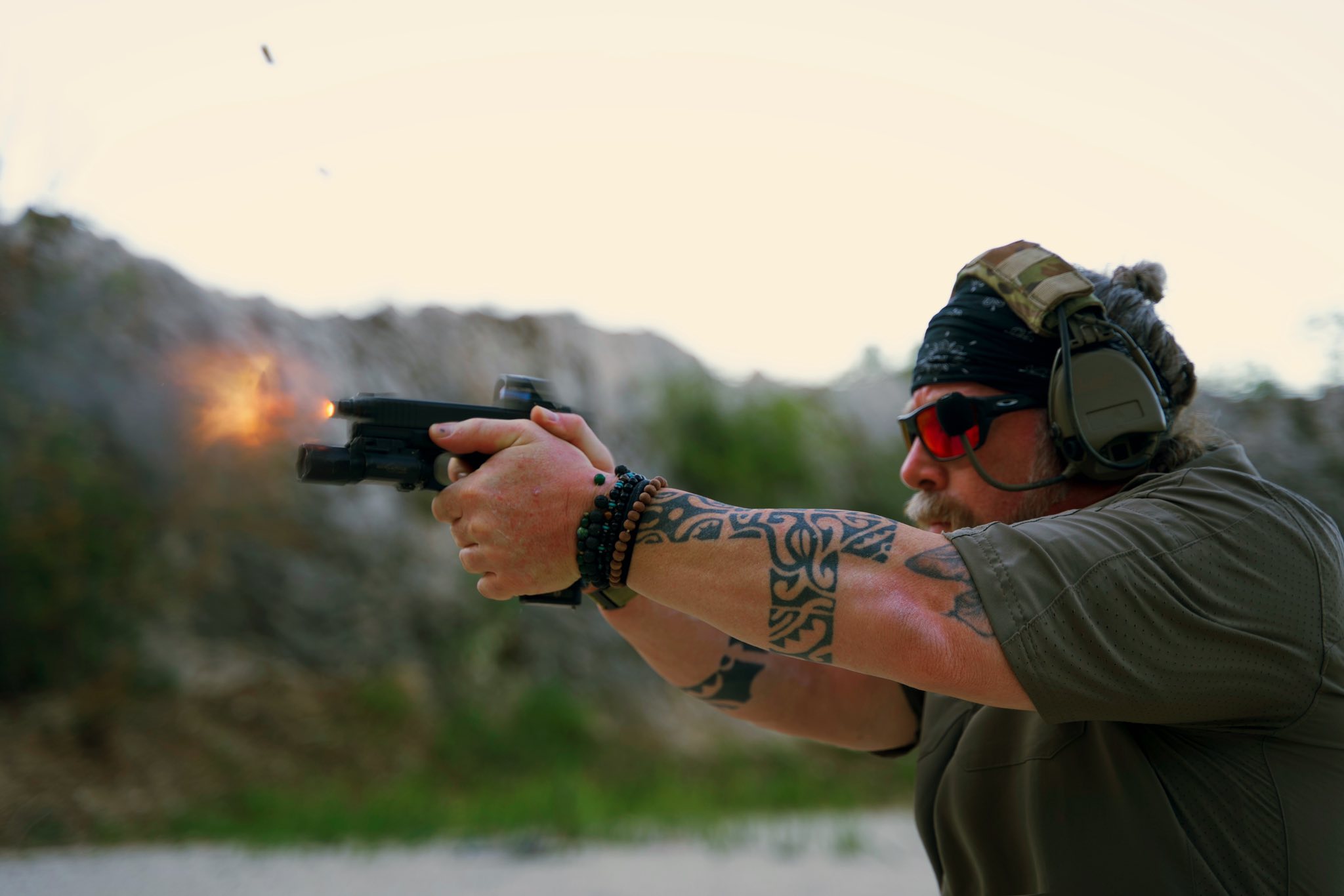⸻
Over years of study and professional application, I have come to a certainty: GRIP accounts for 80% of the entire shooting mechanics. It is the absolute key in the interaction between the shooter and the platform. It is the contact point, the energy transfer node, the primary element in recoil control and force direction. Yet, despite its crucial importance, GRIP remains one of the most misunderstood, oversimplified, and misrepresented aspects of the entire training and operational landscape.
The reason? The lack of a shared, scientifically validated method. Shooting is often reduced to a series of repetitive exercises, stripped of the necessary biomechanical and neurological understanding. As a result, distorted concepts continue to circulate as absolute truths.
⸻
“70% support hand – 30% strong hand.”
This phrase has echoed for years in every shooting course. It has become an accepted truth, handed down by instructors, manuals, and even industry professionals. According to this theory, the hand gripping the weapon and controlling the trigger should apply less pressure than the support hand. A seemingly logical force distribution, but one never truly validated.
I, too, repeated this mantra for a long time. With one caveat: I always stated that the “70/30” was more of a didactic device to raise student awareness than a truly applicable ratio. In fact, all it took was a simple demonstrative exercise, crossing hands and simulating that force difference, to reveal how mechanically unfeasible it is.
But today I can state with scientific certainty: not only is that ratio incorrect, it is diametrically opposed to measurable reality.
⸻
To overcome the limits of empiricism, I decided to structure an experimental study using a scientific approach, aimed at objectively measuring the force exerted by each hand during grip and shooting. The first step was to acquire suitable instruments: dynamometers capable of accurately simulating the grip on half-size (G19) and full-size (G 17, G 45) semiautomatic platforms among the most widely used in both operational and training contexts, civilian and institutional.
Alongside the force sensors, we used high-definition cameras to perform photo-mechanical and biomechanical analysis of the shooting sequences. Frame by frame, gesture by gesture, we dissected every element of the mechanical cycle, analyzing how force is actually distributed between the hands during gripping, firing, and recoil control phases.
⸻
The data obtained is clear, precise, verifiable, and above all, disruptive. The truth is this:
The strong hand exerts a force 2 to 4 times greater than the support hand.
Here are some figures extracted from some of the tests conducted during the study:
• During weapon manipulation, in both static and dynamic phases aimed at platform control, the average force applied by the strong hand alone ranges from 3 to 9 kg.
• During the main and active shooting phase, the strong hand applies an average force ranging between 20 to 30 kg.
• The support hand, during the active shooting phase, applies an average force ranging from
5 to 10 kg.
These values come from medium-built male subjects using semiautomatic platforms of various sizes, among the most commonly used globally in defense and operational environments.
⸻
The instructional error arises from a biomechanical misunderstanding: the belief that the support hand must exert more force to “compensate” for the weapon’s movement. But the neuro-muscular reality of the action disproves this.
The strong hand is the only true mechanical anchor point, the one controlling the trigger and governing the weapon’s center of mass. The support hand amplifies and accompanies, but it does not lead.
⸻
This study shows just how urgent it is to move past the era of unchecked dogmas.
Shooting is not an empirical discipline. It is a biomechanical and neuromotor system, and must be treated as such, with method, measurement, data, and instructional responsibility.
Those who teach today have a clear task: update their technical language and abandon simplified formulas that have no connection to the actual mechanical dynamics of the gesture. An error taught in the classroom becomes, in the field, instability, inefficiency, and risk.
GRIP is not a subjective impression. It is a structural interface between body and machine, a gesture that is measurable, repeatable, optimizable.
It is the scientific foundation of shooting mechanics.



